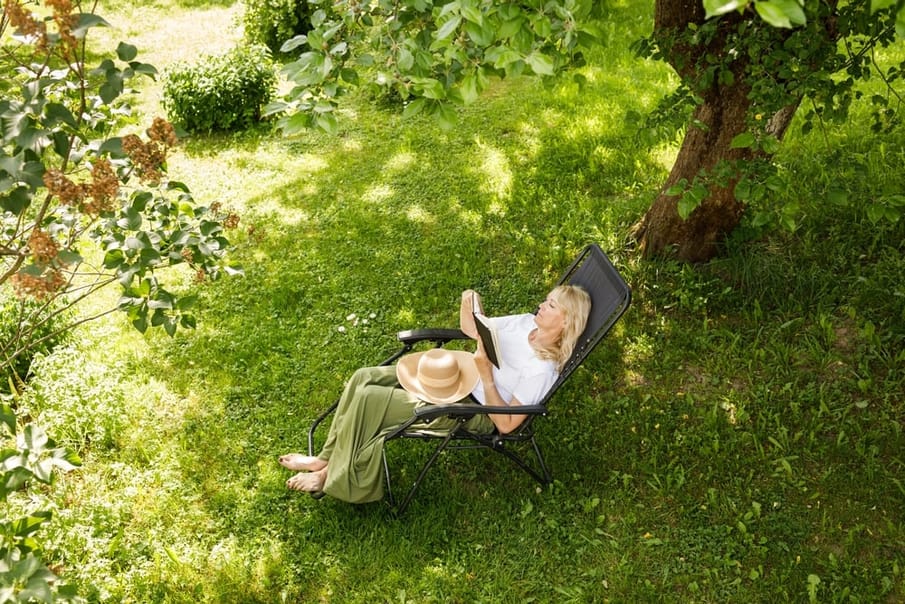The latest trend is less about buying into gathering more stuff and more about making do with what you already have. But why is the underconsumption core striking a chord, and how can you embrace it yourself?
If you took the time to count up every prompt you received each day to buy something new, you may find yourself horrified by the results. Targeted ads on every social media platform; sponsored posts by celebrities and influencers; radio ads; TV ads; billboards; special offers; product placement; recommendations from friends and family; and even just the exposure to someone else living an enviable life. Phew, it’s exhausting.
From clothes to homeware, beauty products to new tech, there’s always something new and shiny on offer. And with encouragement at every corner to take the plunge and add it to our basket, it’s no surprise that consumer culture has gotten out of hand. But, now, a new trend is gaining momentum: under consumption core.
In social media posts, on platforms like TikTok and Instagram, users share videos of well-used items that still provide a function in their lives; bathroom cabinets stocked only with the essentials; a minimal wardrobe; and older tech. The point of these videos is to provide a break from the culture that tells us to buy, buy, buy – and instead to build up an appreciation for the things we already own.
And it’s something that’s sorely needed. According to a report from Statista, consumer spending on clothing in the UK has continued to rise year-on-year from 2005 to 2023, with spending reaching an all-time high in 2023 at approximately £63.7 billion. It is a similar landscape in other areas of consumption, with electronic waste quickly becoming the world’s fastest-growing waste stream – estimated to total 80 million metric tons by 2030.
Beyond waste, overconsumption can affect us on a personal level. In addition to creating financial pressure – comparison traps can lead to feelings of inadequacy, and we may feel compelled to keep on chasing the next purchase. But these purchases alone will never soothe the underlying feelings of anxiety and self-doubt, and so the cycle continues.
By embracing the underconsumption core trend, or by simply taking a look at our own consumption habits, we have more to gain than just the money we’re saving. Learning to be content is something that’s often heralded by those offering advice for a happier, simpler life. Leaving behind the habit of comparing ourselves to others, addressing our relationships with ‘stuff’, and learning where our priorities lie are all actions that lead to a better sense of self and the things that truly matter to us.
Ready to give this latest trend a go? Here are some quick tips for embracing underconsumption.
Think critically about the content you see online
Although the laws on advertising – particularly on social media – have gotten stricter in recent years, it can be easy to get sucked into sponsored posts, particularly when the item for sale is being used in an aesthetically pleasing way, or someone you trust is singing its praises.
Try to build your awareness of when this is happening, and assess how these instances make you feel. Question the motivation behind why certain products are being pushed on you, fact-check claims, and do your own research on any claims that seem too good to be true.
Limit your purchases
If purchasing new items regularly is a habit that you have fallen into, you may want to begin by putting in some limits. One popular method when it comes to clothing is to only buy five new items a year. Not only does this force you to slow down when it comes to jumping on trends, but it also encourages you to get creative with the outfits you already own.
When it comes to tech, if you tend to replace your phone at the end of every contract, you could consider keeping hold of it once it has been paid off – and only replace it when the performance has dropped significantly. For other commonly bought items such as toiletries, you could create a rule of using up one item entirely before replacing it (let’s be honest, how many bottles of body lotion does one person really need?) Taking these small steps at the beginning can help you to create boundaries for yourself.
Try not to turn on the things you already own
When it comes to the underconsumption trend, it can be tempting to try to strip back our lifestyles immediately by having a good clear-out and letting go of things we don’t need. This can be done responsibly – for example, by selling items on second-hand sites so we know that they’re going to a good home – however, it’s important to try not to accidentally create more waste.
If you’ve been inspired by the trend, make the transition slowly. Use the things that you already have until they need to be replaced, and then look into ways to recycle them responsibly. Consider the small changes that you can make to your purchase habits to get into a rhythm.
Consider what you have to gain
Sometimes, simple is better. When we leave behind the race to the top, and stop taking notice of aspirational media that can leave us feeling unfulfilled with the things we have, we have a lot more space to focus on the things that truly make us happy.
There’s no point denying that ‘stuff’ can sometimes make us happy. It may be a beautifully soft blanket to curl up under, a self-care product that feels like a treat to use, an outfit that makes you feel like ‘you’, or a gadget that genuinely makes your life easier. We don’t have to give up those things entirely. But, when we chisel things down to what really matters, there’s so much more space for joy and gratitude.


Comments